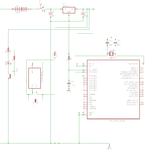khangzing
Full Member level 2

- Joined
- Feb 22, 2013
- Messages
- 123
- Helped
- 3
- Reputation
- 6
- Reaction score
- 3
- Trophy points
- 1,298
- Activity points
- 2,148
i just wanted to confirm,i though it is like that,just don't want to miss any possibility for troubleshooting,because it is not working -.-



